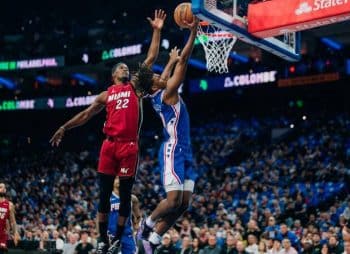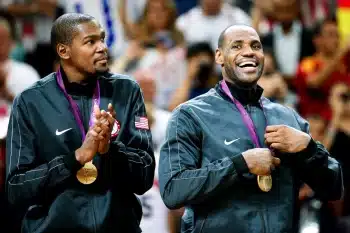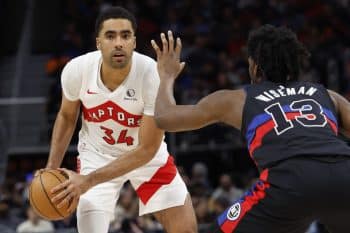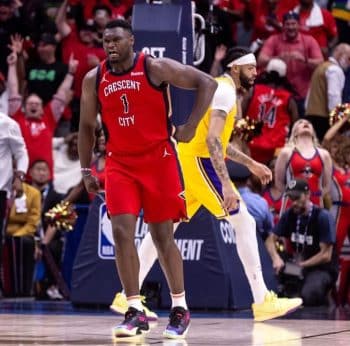NBA
NBA AM: Brown, Tatum Biggest Winners From Celtics’ Blockbuster

The Boston Celtics and Cleveland Cavaliers made one of the summer’s most shocking deals on Tuesday, swapping two All-Star-worthy point guards, a defensive-minded rotation player and, of course, that unprotected 2018 first-rounder from the Brooklyn Nets. Deservedly so, the headlines have focused on the Eastern Conference hierarchy and the future of LeBron James, but there’s one angle not yet thoroughly exhausted.
Without a doubt, Jaylen Brown and Jayson Tatum are the biggest winners of the trade, as the dismissal of Jae Crowder opens the door for Boston’s young talents.
Since his arrival from the Dallas Mavericks in 2014-15, Crowder quickly became a mainstay in the Celtics’ rotation. As most do, Crowder blossomed under head coach Brad Stevens and saw his points per game average jump from 9.5 to about 14 over the past two seasons. Aside from his sticky defense, the forward hit 39.8 percent of his three-pointers last season, an important contribution to a Celtics team that made 12 of them per contest—third-most in the NBA.
All in all, Crowder was a quintessential starter for the Celtics, but the arrival of Gordon Hayward was set to change the team’s entire dynamic. Shortly after signing Hayward in July, Stevens remarked that “[he doesn’t] have five positions anymore.” That, more or less, the roster is made up of ball-handlers, wings or bigs. Crowder, along with Hayward, Brown and Tatum, all soundly fall into that wing category.
In 2016-17, Crowder averaged 32.4 minutes per game between both forward positions and his versatility made it difficult for Brown to crack the rotation in his rookie season. Brown saw just 17 minutes a game and only got a major jump there after Avery Bradley injured his Achilles in January, causing him to miss 18 straight games. Nevertheless, Brown found his legs and became a catalyst during the Celtics’ surprise run to the top seed in the conference.
Between Crowder, Hayward’s star power, the court-spreading Marcus Morris and a contract year for Marcus Smart, Brown was in danger of seeing a potentially diminished role once again. With Crowder out of the picture, Brown, presumably, becomes a starter for Boston, interchangeably swapping with Hayward as the shooting guard or small forward depending on matchups. If the Celtics want to replace Bradley’s defense as best as possible, Brown could be that answer on opposing guards.
With Smart in off the bench as the sixth man, Brown will likely see plenty of minutes at power forward as well if Stevens opts for a trendy small-ball lineup. Either way, it wouldn’t be surprising for Brown’s playtime to now skyrocket to something closer to the 30-minute mark with the Celtics’ newfound need for a defensively-stout game-changer.
At his best, Brown is a talented scorer, an explosive athlete with a slowly-improving jump shot. In all likelihood, now Brown will feast off the attention funneled toward Irving, Hayward and Al Horford, a trio with nine combined All-Star selections. The Celtics are undoubtedly a versatile bunch, but perhaps none more so than Brown. So, if he continues to impressively develop during his crucial sophomore season, the decision to move Crowder will look like a no-brainer.
In Jayson Tatum’s case, he’ll now have the opportunity to earn a key role instead of riding the bench, buried behind a slew of veterans.
As mentioned, Brown only got his big break when Bradley hit the trainer’s table in 2016-17 and the talented, multi-positional Tatum was swiftly headed toward a similar fate. Last month, Stevens made note of Tatum’s potential fluidity during free agency, acknowledging that “Tatum will play wherever. . . He’s a very versatile player.”
Still, it was tough to envision a scenario in which the Celtics would again compete for the No. 1 seed while also finding enough meaningful minutes to develop both Brown and Tatum given some of their positional logjams. Now, that’s no longer the case, as Tatum should fill that rotational gap seamlessly. Assuming that the Celtics start some combination of Irving, Hayward, Brown, Morris and Horford, Tatum can succeed in a second unit energy role that Brown made his own last season.
Tatum is a raw prospect and expectations should be tempered for now, especially for a franchise with such lofty postseason goals, but the message is clear: Brown and Tatum are the future. Crowder had to be included in the Thomas-Irving swap to help match salaries, but the Celtics wouldn’t have parted with such a crucial cog in the machine if they weren’t confident in their young pieces.
During his summer league expeditions, Tatum showed off his NBA-ready ability to score, reaffirming general manager Danny Ainge’s decision to trade down instead of selecting the unanimous favorite for No. 1 overall, Markelle Fultz. Strangely enough, the league will likely never see a situation like the Celtics’ again. Gifted with a fistful of draft picks from their 2013 blockbuster with the Nets, Ainge was able to create a monster in just a few years’ time. While most lottery talents head to non-playoff teams with lower expectations, the Celtics added two bonafide prospects to a rapidly improving roster.
Of course, that luxury comes with the pressure of developing your prospects, but not at the expense of winning important basketball games instead. So far, it’s safe to say the Celtics have succeeded on both fronts.
As the Celtics continue to toe the line between contending and rebuilding on-the-fly, Ainge’s faith in Brown and Tatum speak volumes following the separate deals involving Bradley and Crowder this summer. Obviously, there’s a lot to be excited about these days in Boston and the arrival of Irving and Hayward will only escalate those feelings. Although they still may be a half-step away from contending with the Cavaliers, fans should be encouraged that the future is so incredibly bright.
At the end of the day, swapping two All-Star caliber point guards won’t move the needle in the grand scheme of things – at least not in 2017-18 – but the biggest winner of this blockbuster deal will be the continuing development of Brown and Tatum.
Now, let’s see if the duo can reward Ainge’s leap of faith.











